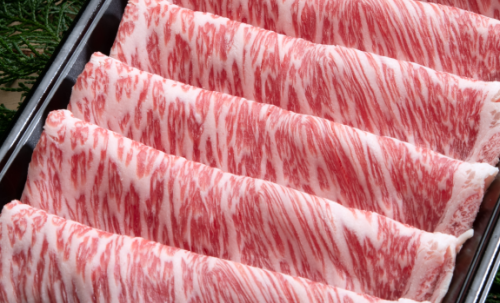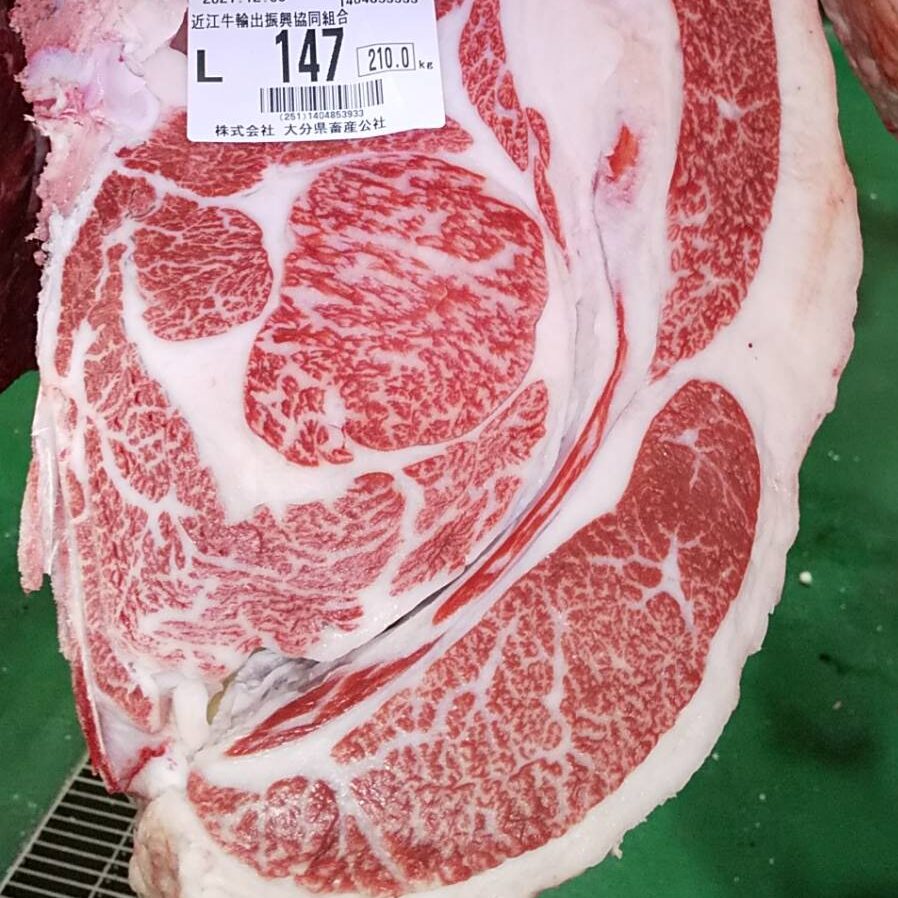
和牛は、「黒毛和種」「褐毛和種」「無角和種」「日本短角種」という4つの品種及びこれらの品種間の交配により生まれる牛を指し、日本国内には200以上の和牛ブランドが存在します。中でも、近江牛、松阪牛、神戸牛は日本三大和牛として特に高い人気を誇っています。
国産牛と和牛の違いについて
しばしば和牛と混同されるのが国産牛の概念です。
国産牛は、国内で3ヶ月以上飼育された牛で、その飼育期間が最も長い牛を指し、品種や生まれた場所には依存しません。つまり、乳牛として飼育されるホルスタインも、国産牛に含まれます。
対して、和牛は品種に基づいて定義されるため、国外でも飼育・生産が可能となっています。特に価格の面で競争力を持つオーストラリアやアメリカ産の「WAGYU」は、日本の畜産にとって大きな競争相手となっています。
和牛の海外での人気拡大は、その独特の「柔らかさ」と「ジューシーさ」に優れたバランスが理由であることが挙げられます。
全国肉用牛振興基金協会の調査によると、外国人のほぼ全員が和牛の味を「好む」か「やや好む」と評価しており、その主な理由として「柔らかさ」や「ジューシーさ」が挙げられています。
これは、和牛の脂肪に含まれるオレイン酸の性質に由来しています。オレイン酸は低い融点を持ち、口の中で溶けやすいため、独特の食感を生み出しているのです。
Wagyu refers to cattle that are either purebred or crossbred from four specific Japanese breeds: the Japanese Black, Japanese Brown, Japanese Polled, and Japanese Shorthorn. There are over 200 Wagyu brands within Japan, among which Ōmi beef, Matsusaka beef, and Kobe beef are particularly popular, known as the three great Wagyu brands of Japan.
The Difference Between Domestic Japanese Beef and Wagyu
The concept of domestic Japanese beef is often confused with Wagyu.
Domestic Japanese beef refers to any cattle that have been raised in Japan for more than three months, regardless of breed or place of birth. This means even Holstein cattle, typically raised for dairy, fall under the category of domestic Japanese beef.
In contrast, Wagyu is defined based on breed, allowing for the possibility of raising and producing Wagyu outside of Japan. “WAGYU” from countries like Australia and the United States, which offer competitive pricing, have become significant competitors to Japanese livestock producers.
The increasing popularity of Wagyu abroad can be attributed to its unique balance of tenderness and juiciness.
According to a survey by the All Japan Meat Federation, nearly all foreigners prefer the taste of Wagyu beef, citing its tenderness and juiciness as the main reasons.
This is due to the properties of oleic acid in Wagyu fat, which has a low melting point and melts easily in the mouth, contributing to its distinctive texture.
和製堂
WASEIDO CO., LTD

